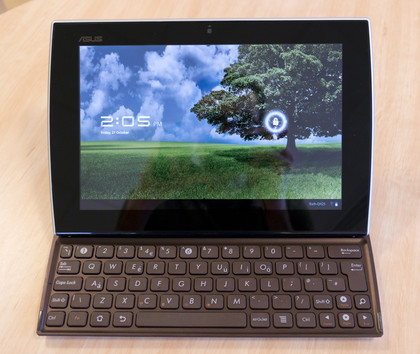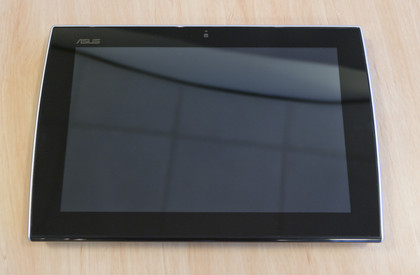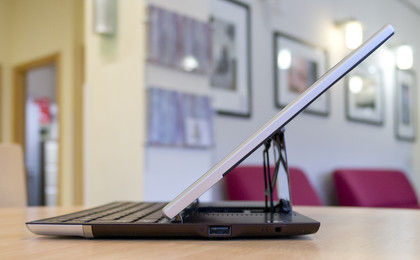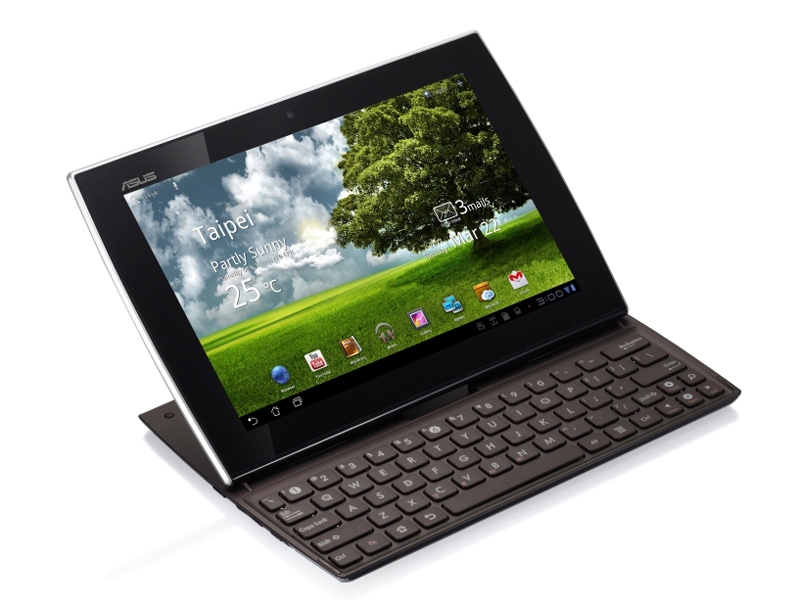TechRadar Verdict
Pros
- +
Glorious screen
- +
Keyboard is genuinely useful
- +
Android at its best
- +
Good preloaded apps
Cons
- -
Big and heavy
- -
Some may find keyboard cramped
- -
Battery life a little disappointing
Why you can trust TechRadar
We were totally taken by the Eee Pad Transformer when it came out because it did something different to the iPad, and so gave itself room to breathe away from the tablet big guns.
Now its brother, the Asus Eee Pad Slider has arrived, and manages to stand out in much the same way.
You can check out the Asus Eee Pad Slider in action, in our special video review:
The specs are fairly typical for tablets these days. The Eee Pad Slider features a 1GHz Nvidia Tegra 2 system-on-a-chip, offering dual-core power and good graphics performance, which powers Android 3.1 out of the box (though you can upgrade to 3.2 as soon as you get it connected to the internet, and an Android 4.0 update is on its way).
There's 1GB of RAM to keep multitasking smooth, along with 16GB or 32GB of internal storage, though a microSD card slot means you can boost this. Wi-Fi is present up to 802.11n, as is Bluetooth.
The screen is a generous 10.1-inch 1280 x 800 IPS affair, so there's plenty of space for Android 3.2 to show us what it's got. We'll go into full details about the screen's quality on the Performance page.

Of course, behind the screen is where things get interesting. By grabbing the top of it, you can pull it up, so it slides back and sits up at an angle to reveal the built-in keyboard.
The front of the device is glossy black with a silver rim, like a lot of tablets, including the Samsung Galaxy Tab 10.1, but the keyboard and rear case of the Eee Pad Slider are a kind of chocolate colour, with a matt finish.

It's an unusual direction for tablets, but one that we think works for this one. The more we used the Eee Pad Slider, the more we found it to be an office-focussed tablet, and the aesthetic really fits that. Overall, it bears far more of a resemblance to a BlackBerry Boldhandset than the iPhone, and we doubt thats coincidence.

The build quality of the two halves of the Eee Pad Slider is excellent, feeling totally solid and without any noticeable give. Our only (admittedly very mild) concerns are with the joins between the two.
We don't expect the hinge to break on anyone for no good reason, but the way the screen just sits loose and wobbly when in the upright position is odd compared how solid the rest of the device is.
There's also a ribbon connecting the screen to the keyboard. While we've no doubt that this offers a huge power consumption advantage over using Bluetooth to connect the two, it's an obvious weak point if your Slider should take an unexpected trip to the ground.
Around the sides, you've not only got your microSD card slot, but also the Lock key, a volume rocker, a reset button that's far too easy to press, a mini-HDMI port for video output, Asus's proprietary connection for USB connectivity and charging, a 3.5mm headphone jack, and a full-size USB port.

Having two separate sliding halves in this tablet inevitably means it's a lot thicker than the competition. At 273 x 180.3 x 17.3mm, it's around twice as thick as an iPad 2, and at 960g it's around 50 percent heavier.
The weight difference really does tip it from being comfortable to hold to being just too heavy to keep in one hand for long. Between this and the slide-out function, which puts the screen at a great angle for both desk and lap use, it becomes clear that the Eee Pad Slider is less of a competitor for tablets like the iPad, and is more targeting replacing netbooks and smaller laptops.
The Eee Pad Slider looks set to be available for around £450 in its 32GB version, which isn't as cheap as the keyboardless half of the Eee Pad Transformer, but is good value compared to most other Android tablets.
